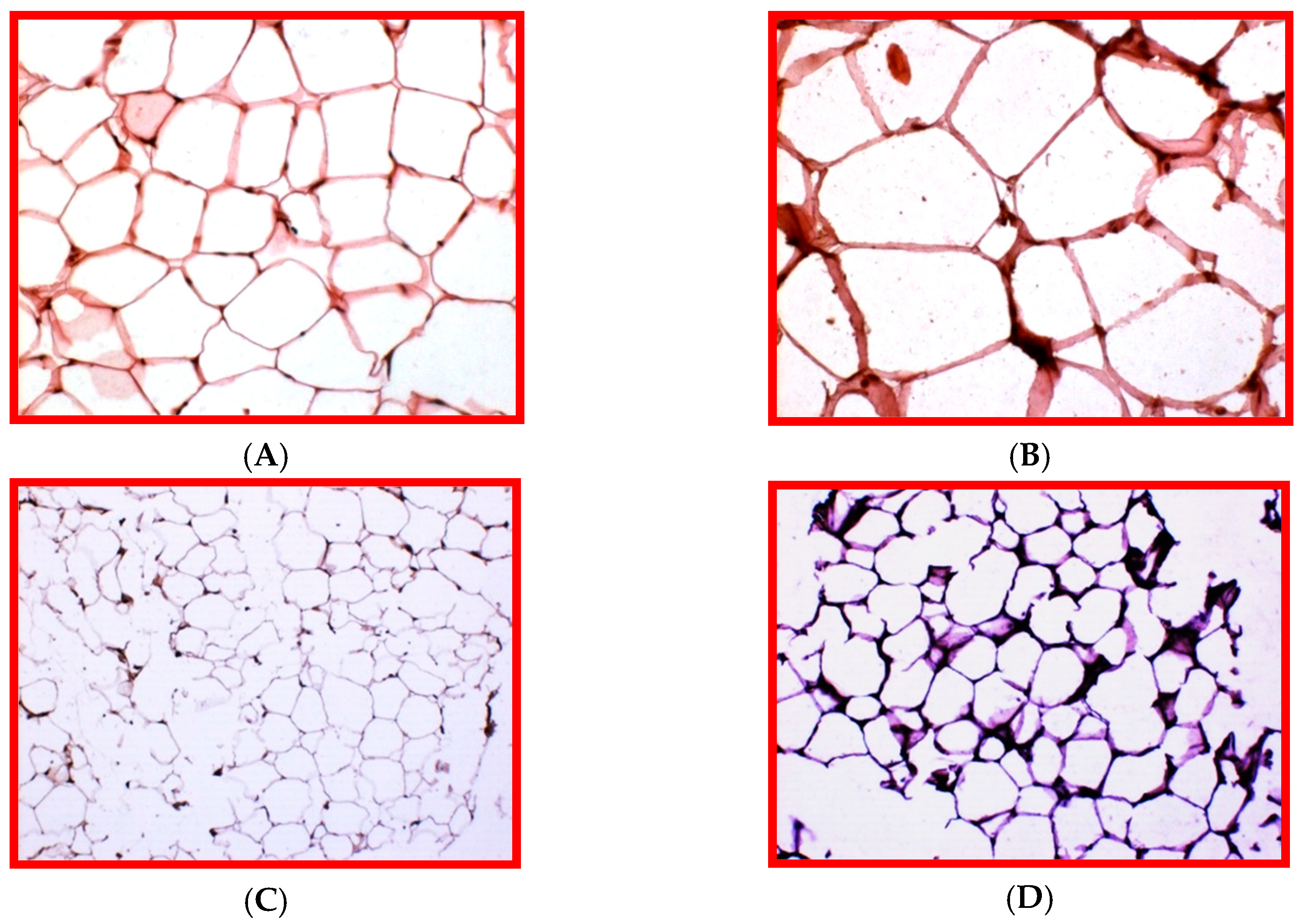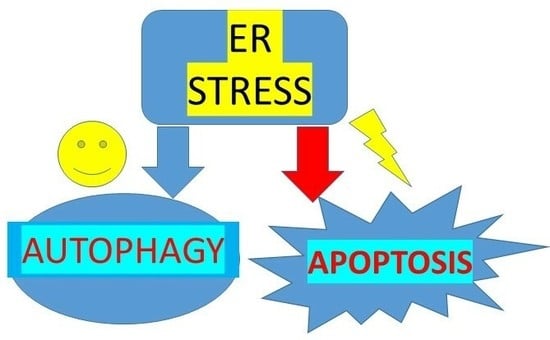Exploring Cellular Stress Response and Chaperones
Abstract
:1. Endoplasmic Reticulum as a Peculiar Site of Stress Response
2. ER Stress into the Pathogenesis of Human Metabolic Diseases
3. Conclusions
Funding
Conflicts of Interest
References
- Schwarz, D.; Blower, M. The endoplasmic reticulum: Structure, function and response to cellular signaling. Cell. Mol. Life Sci. 2016, 73, 79–94. [Google Scholar] [CrossRef] [PubMed]
- Palade, G. The endoplasmic reticulum. J. Biophys. Biochem. Cytol. 1956, 2, 85–98. [Google Scholar] [CrossRef] [PubMed]
- Flynn, G.; Pohl, J.; Flocco, M.; Rothman, J. Peptide-binding specificity of the molecular chaperone BiP. Nature 1991, 353, 726–730. [Google Scholar] [CrossRef] [PubMed]
- Ni, M.; Lee, A. ER chaperones in mammalian development and human diseases. FEBS Lett. 1991, 581, 3641–3651. [Google Scholar] [CrossRef]
- Ito, S.; Nagata, K. Roles of the endoplasmic reticulum-resident collagen specific molecular chaperone hsp47 in vertebrate cells and human disease. J. Biol. Chem. 2019, 294, 2133–2141. [Google Scholar] [CrossRef]
- Ritossa, F. Thermic shock in Drosophila. Experientia 1962, 18, 571–573. [Google Scholar] [CrossRef]
- Welch, W. Mammalian stress response: Cell physiology, structure/function of stress proteins, and implications for medicine and disease. Physiol. Rev. 1992, 72, 1063–1081. [Google Scholar] [CrossRef]
- Marino-Gammazza, A.; Macaluso, F.; Di Felice, V.; Cappello, F.; Barone, R. Hsp60 in skeletal muscle fiber biogenesis and homeostasis: From physical exercise to skeletal muscle pathology. Cells 2018, 7, 224. [Google Scholar] [CrossRef] [PubMed]
- Mantej, J.; Polasik, K.; Piotrowska, E.; Tukaj, S. Autoantibodies to heat shock proteins 60, 70, and 90 in patients with rheumatoid arthritis. Cell Stress Chaperones 2019, 24, 283–287. [Google Scholar] [CrossRef] [PubMed]
- Kleizen, B.; Braakman, I. Protein folding and quality control in the endoplasmic reticulum. Curr. Opin. Cell Biol. 2004, 16, 343–349. [Google Scholar] [CrossRef] [PubMed]
- Bravo, R.; Parra, V.; Gatica, D.; Rodriguez, A.; Torrealba, N.; Paredes, F.; Wang, Z.; Zorzano, A.; Hill, J.; Jaimovich, E.; et al. Endoplasmic Reticulum and the Unfolded Protein Response: Dynamics and Metabolic Integration. In International Review of Cell and Molecular Biology; Jeon, K.W., Ed.; Elsevier: Amsterdam, The Netherlands, 2013; Volume 301, Chapter 5; pp. 215–290. [Google Scholar]
- Walter, P.; Ron, D. The unfolded protein response: From stress pathway to homeostatic regulation. Science 2011, 334, 1081–1086. [Google Scholar] [CrossRef]
- Hetz, C.; Papa, F.R. The unfolded protein response and cell fate control. Mol. Cell 2018, 69, 169–181. [Google Scholar] [CrossRef]
- Dominguez-Martin, E.; Hernandez-Elvira, M.; Vincent, O.; Coria, R.; Escalante, R. Unfolding the Endoplasmic Reticulum of a Social Amoeba: Dictyostelium discoideum as a new model for the study of endoplasmic reticulum stress. Cells 2018, 7, 56. [Google Scholar] [CrossRef]
- Olzmann, J.; Kopito, R.; Christianson, J. The mammalian endoplasmic reticulum associated degradation system. Cold Spring Harb. Perspect. Biol. 2013, 5, a013185. [Google Scholar] [CrossRef]
- Stacchiotti, A.; Favero, G.; Lavazza, A.; Garcia-Gomez, R.; Monsalve, M.; Rezzani, R. Perspective: Mitochondria-ER contacts in metabolic cellular stress assessed by microscopy. Cells 2019, 8, 5. [Google Scholar] [CrossRef] [PubMed]
- Upton, J.; Wang, L.; Han, D.; Wang, E.S.; Huskey, N.; Lim, L.; Truitt, M.; MacManus, M.; Ruggero, D.; Goga, A.; et al. IRE1α cleaves select microRNAs during ER stress to depress translation of pro-apoptotic caspase 2. Science 2012, 338, 818–822. [Google Scholar] [CrossRef] [PubMed]
- Park, S.; Lim, Y.; Lee, D.; Elvira, R.; Lee, J.; Lee, M.; Han, J. modulation of protein synthesis by eIF2α Phosphorylation protects cell from heat stress-mediated apoptosis. Cells 2018, 7, 254. [Google Scholar] [CrossRef] [PubMed]
- Maiuri, M.C.; Kroemer, G. Therapeutic modulation of autophagy: Which disease comes first? Cell Death Diff. 2019, 26, 680–689. [Google Scholar] [CrossRef] [PubMed]
- Ogata, M.; Hino, S.; Saito, A.; Morikawa, K.; Kondo, S.; Kanemoto, S.; Murakami, T.; Taniguchi, M.; Tanii, I.; Yoshinaga, K.; et al. Autophagy is activated for cell survival after endoplasmic reticulum stress. Mol. Cell. Biol. 2006, 26, 9220–9231. [Google Scholar] [CrossRef]
- Roest, G.; Hesemans, E.; Welkenhuyzen, K.; Luyten, T.; Engedal, N.; Bultynck, G.; Parys, J. The ER Stress Inducer L-Azetidine-2-Carboxylic acid elevates the levels of Phospho-eIF2α and of LC3-II in a Ca2+-dependent manner. Cells 2018, 7, 239. [Google Scholar] [CrossRef]
- Wang, M.; Kaufman, R. Protein misfolding in the endoplasmic reticulum as a conduit to human diseases. Nature 2016, 529, 326–335. [Google Scholar] [CrossRef] [PubMed]
- Ghemrawi, R.; Battaglia-Hsu, S.; Arnold, C. Endoplasmic Reticulum Stress in Metabolic Disorders. Cells 2018, 7, 63. [Google Scholar] [CrossRef] [PubMed]
- Domblides, C.; Lartigue, L.; Faustin, B. Metabolic stress in the immune function of T cells, Macrophages and Dendritic cells. Cells 2018, 7, 68. [Google Scholar] [CrossRef] [PubMed]
- Zhang, L.; Wang, H. The essential functions of the endoplasmic reticulum chaperones in hepatic lipid metabolism. Dig. Liver Dis. 2016, 48, 709–716. [Google Scholar] [CrossRef]
- Lebeaupin, C.; Vallée, D.; Hazari, Y.; Hetz, C.; Chevet, E.; Bailly-Maitre, B. Endoplasmic reticulum stress signaling and the pathogenesis of non-alcoholic fatty liver disease. J. Hepatol. 2018, 69, 927–947. [Google Scholar] [CrossRef] [PubMed]
- Ozcan, U.; Cao, Q.; Yilmaz, E.; Lee, A.; Iwakoshi, N.; Ozdelen, E.; Tuncman, G.; Görgun, C.; Glimcher, L.; Hotamisligil, G. Endoplasmic Reticulum Stress links obesity, Insulin Action, and Type 2 Diabetes. Science 2004, 306, 457–461. [Google Scholar] [CrossRef] [PubMed]
- Kawasaki, N.; Asada, R.; Saito, A.; Kanemoto, S.; Imaizumi, K. Obesity-induced endoplasmic reticulum stress causes chronic inflammation in adipose tissue. Sci. Rep. 2012, 2, 799. [Google Scholar] [CrossRef]
- Vandewynckel, Y.; Lauken, S.; Geerts, A.; Bogaerts, E.; Paridaens, A.; Ver Helst, X.; Janssen, S.; Heindryckx, F.; Van Vlierberghe, H. The paradox of the unfolded protein response in cancer. Anticancer Res. 2013, 33, 4683–4694. [Google Scholar]
- Cubillos-Ruiz, J.; Bettigole, S.; Glincher, L. Tumorigenic and immunosuppressive effects of endoplasmic reticulum stress in cancer. Cell 2017, 168, 692–706. [Google Scholar] [CrossRef] [PubMed]
- Gundamaraju, R.; Wai, R.; Chong, C.; Myers, S.; Norouzi, S.; Shastri, M.; Eri, R. Interplay between Endoplasmic Reticular Stress and Survivin in Colonic Epithelial Cells. Cells 2018, 7, 171. [Google Scholar] [CrossRef]
- Tao, Y.; Conn, P. Pharmacoperones as novel therapeutics for diverse protein conformational diseases. Physiol. Rev. 2018, 98, 697–725. [Google Scholar] [CrossRef] [PubMed]
- Hernando-Rodríguez, B.; Artal-Sanz, B. Mitochondrial Quality Control Mechanisms and the PHB (Prohibitin) Complex. Cells 2018, 7, 238. [Google Scholar] [CrossRef] [PubMed]
- Zhang, J.; Zhang, K.; Li, Z.; Guo, B. ER stress-induced inflammasome activation contributes to hepatic inflammation and steatosis. J. Clin. Cell Immunol. 2016, 7, 457. [Google Scholar] [CrossRef] [PubMed]


© 2019 by the author. Licensee MDPI, Basel, Switzerland. This article is an open access article distributed under the terms and conditions of the Creative Commons Attribution (CC BY) license (http://creativecommons.org/licenses/by/4.0/).
Share and Cite
Stacchiotti, A. Exploring Cellular Stress Response and Chaperones. Cells 2019, 8, 408. https://doi.org/10.3390/cells8050408
Stacchiotti A. Exploring Cellular Stress Response and Chaperones. Cells. 2019; 8(5):408. https://doi.org/10.3390/cells8050408
Chicago/Turabian StyleStacchiotti, Alessandra. 2019. "Exploring Cellular Stress Response and Chaperones" Cells 8, no. 5: 408. https://doi.org/10.3390/cells8050408





